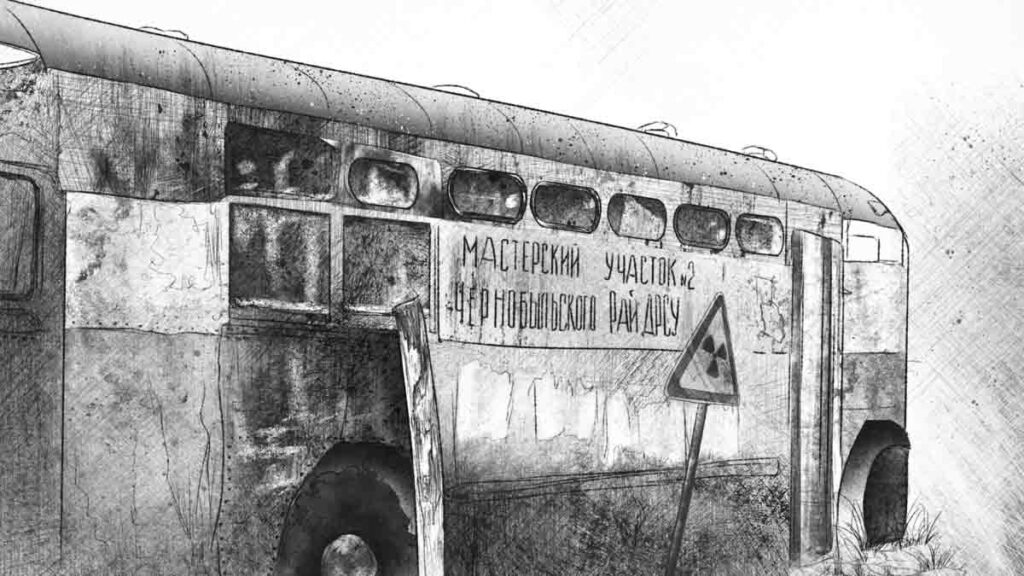
For more than thirty years, it has been separating us from the terrible tragedy that claimed lives and mutilated fates, caused enormous material damage and threatened the safety and health of people throughout the European continent.
During these three decades, the Chernobyl accident, its causes, course and consequences have been studied by a wide variety of specialists — from specialists in nuclear physics and nuclear energy to ecologists, doctors, psychologists and historians.
A lot of literary works have been written about Chernobyl, the memoirs of participants and witnesses of the tragedy are also published. Chernobyl has become a disaster on a European scale, a challenge to science and a test of human solidarity, a place of heroic deeds and fortitude.
A whole generation of Ukrainians has grown up since the Chernobyl accident. They were born in post-communist Ukraine and did not directly experience this event. But it is this generation that should not only know about the 1986 disaster, study its causes and results, but also preserve and pass on the memory of the liquidators of the accident and all the people whom this terrible tragedy did not bypass.
It is for this purpose, in order to preserve the memory of the Chernobyl disaster, which it appears in the stories of its witnesses, an electronic archive of memoirs of participants in the liquidation of the consequences of the Chernobyl accident has been recently created.
The most important feature of oral sources is that they provide information not only about past events, but about the relevance and significance of the events for a person or a whole society. At the same time, oral stories, according to experts, give everyone the opportunity to “go down to earth”, to the simple and sometimes clumsy human stories that underlie the historical past.
“We have no right to speculation or fiction,” historians involved in the Chernobyl issue say, “especially when we still have the opportunity to ask a direct witness.”
According to various estimates, up to 800,000 people were employed by the Soviet government to eliminate the consequences of the accident during 1986-1989. Most of these people were military or reservists, but among them were representatives of other professions: medical workers, builders, engineers, cooks, drivers, etc. Three percent of the total number of liquidators were women.
But the Chernobyl disaster affected not only those who were involved in the work to eliminate it. This had tragic consequences for residents of the affected areas. Residents of more than 600 settlements in Belarus and 400 in Ukraine were forced to leave their homes…
Evacuation and relocation were only formally considered as a short-term emergency measure. How do people remember their relocation now? How has evacuation changed the lives of these people and how do they talk about it today? What impact did the accident have on their future lives? What emotions and memories do crash liquidators value today?
Only black cargo of radionuclides is remembered
Researchers at the Chernobyl accident note that most of the participants and victims perceive those events extremely tragically. There is nothing to be surprised at.
Igor Petrovich Poslei was among those who were one of the first to set foot on the contaminated land of Chernobyl, who served there from April 28 to May 15, 1986. Unfortunately, his heart stopped beating, but he remained forever in the hearts of relatives, friends and colleagues. Shortly before his death, Igor Petrovich talked about his everyday life in Chernobyl.
“… On the morning of April 27, the commander of the troops of the Carpathian Military District issued an order to send task forces carrying out tasks in the lesion focus. At that time, I was a lieutenant colonel and held the post of chief of staff of the engineer-sapper regiment, which was deployed in Sambir, Lviv region. I became the commander of the operational group in Chernobyl in the early days of the tragic accident.
A train with equipment and personnel arrived at the spot on April 28 at 4 a.m. at the Yanovo station, which was one and a half kilometers from the reactor. After unloading the train, the task force concentrated in the area of the Kopateli settlement. It is also close to the Chernobyl nuclear power plant, but the radiation level was slightly lower there. Subsequently, they began to carry out tasks to eliminate the consequences of the accident.
The destroyed power unit was an inaccessible and life-threatening powerful source of radiation and the release of a huge amount of aerosol pollution.
In the first days after the accident, the question arose about the construction of the facility, which was supposed to protect the adjacent territory from the penetration of radiation and prevent the exit of radionuclides from the destroyed reactor. We concentrated our efforts on preparing the site for the construction of the “sarcophagus”.
First of all, they cleared the area of radioactive graphite and all kinds of damaged structures, removed contaminated concrete, plaster and the like. Such work was carried out with an extremely heavy radiation background. The level of exposure doses of radiation exceeded all permissible standards by tens and hundreds of times.
Using special machines, pipes were also laid for delivering concrete to the ruins of the fourth power unit. On the night of May 8–9, we prepared a site for ensuring the work of metro builders for further cooling of the fourth reactor from the side of the third reactor… On May 15, my service in Chernobyl ended. Subsequently, we were awarded the Order of the Red Star for participating in the liquidation of the consequences of the accident.
Those who have walked along the roads and paths of the Chernobyl exclusion zone constantly feel the heavy “burden of radionuclides” on them…
It is a pity that the liquidators of Chernobyl have to carry their whole lives.